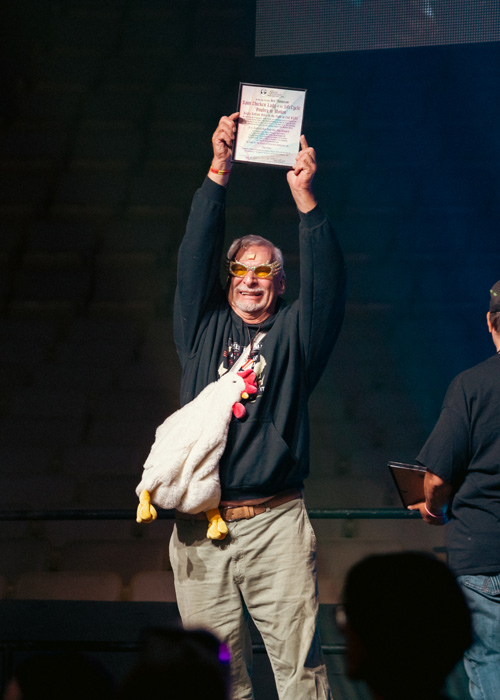Employee Feature: At AIDS/LifeCycle, Mike Broyles-Shaw bikes for accessible health care and a cure
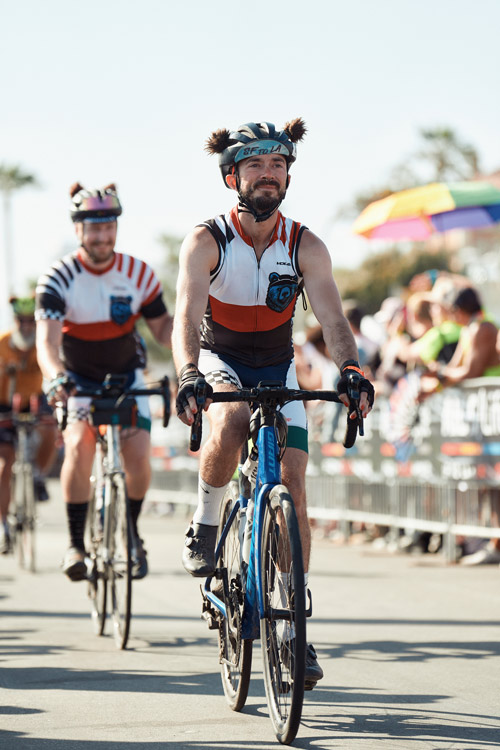
Mike Broyles-Shaw. (Courtesy of AIDS/LifeCycle)
The crowd is quiet, many holding hands, as riders and roadies usher a well-traveled, teal Panasonic bicycle through the Cow Palace on June 1, 2025, during the opening ceremony of the 31st and final AIDS/LifeCycle, a 545-mile, seven-day bike ride from San Francisco to Los Angeles, California, that raises funds for free HIV/AIDS medical care, testing, and prevention services.
The procession moves Mike Broyles-Shaw to tears.
The bicycle — known as the “riderless bike” — represents all the people who have died from AIDS. The opening ceremony and candlelight vigil on the beach in Ventura, California, where they pause to reflect and honor the people they ride for, stirs up a lot of emotions for Broyles-Shaw.
“It ties everything back together. Why we ride for people who can’t be here anymore and why we’re trying to go forward and, hopefully, realize a cure in our lifetime,” said the senior systems administrator for University Campus Computer Support in the Chief Technology Officer (CTO) organization. “It’s a powerful form of visibility and mobilization.”
The charity ride, produced by the Los Angeles LGBT Center and San Francisco AIDS Foundation, began in 1994 as the “California AIDS Ride” and was rebranded in 2002 as AIDS/LifeCycle. LifeCycle helps to generate awareness about AIDS/HIV, provides a welcoming community, and honors those who have died from AIDS-related conditions. About 2,300 riders and 650 roadies, who support the event and riders, have participated each year.
Broyles-Shaw had no endurance cycling experience when he learned about LifeCycle, but he thought it sounded cool, and he liked its mission.
“I grew up a little bit of an older soul, so most of my friends were older than me, and a lot of those friends lost everybody [to AIDS] in the ’80s. While I didn't have to deal with that personally, I still feel very attached to it,” he said, adding that many of his friends are at risk for or have HIV. “Also, it’s important to participate in things that can help fund research and cures, and help people who don’t have health insurance and have nowhere else to go.”
Broyles-Shaw learned about LifeCycle from friends he made after moving to California in 2017. Within a week, he rented a bike for a 13-mile ride with his friends.
“I thought I was going to die, and it was an easy ride. It took some time for me to build up to the level that I’m at now,” said Broyles-Shaw, who participated in his first LifeCycle in 2019.
When he lived in California, he prepared for LifeCycle by riding with friends and cycling groups at local bike shops. The group rides split into packs based on pace. He would start in the middle and work his way up to the front on his mid-grade street bike. This year, his first real winter in 15 years, he didn’t train at all, but he still cycled through every hill and headwind during the event.

Riders stop at Old West Cinnamon Rolls. (Courtesy of AIDS/LifeCycle)
“It’s not a race, it’s an endurance ride,” he said. “It’s building that endurance — time in the saddle, being able to sit on your bike without your rear end wanting to die for six to eight hours a day, multiple days in a row. It’s learning how to use the gears on your bike appropriately and how to pace yourself so you can do all the extra things along the ride, like the unofficial stops that have been there for years and years.”
The shortest leg of this year’s ride was 43 miles, while the longest was 112 miles. Each leg included thousands of feet of elevation gain, topping out at 4,745 feet on Day 4. The ride included four rest stops and a lunch stop on each leg so riders could rest, rehydrate, and refuel. Extra stops — the ones he said help make more good memories — included Old West Cinnamon Rolls and Brown Butter Cookie Co.
Broyles-Shaw, who moved to Utah a little over a year ago, flew to California early to visit with friends and his New Bear Republic teammates, who zip tie tufts of fur to the top of their helmets to look like bear ears, before orientation and check-in at the Cow Palace near San Francisco.
Broyles-Shaw started between 4:00-4:30 a.m., preparing for the day, tearing down his tent, and dropping things off at the gear trucks. Although riders didn’t need to leave camp until 8:00 a.m., he said he liked being out on the road as soon as the route opened.
“Most of the time the route opens between like 6:00 a.m. and 6:30 a.m., and the route always closes at 7:00 p.m., and it’s specifically to make sure that there’s nobody on the road at night,” he said, noting that rest stops also closed at a certain time to keep people moving along. LifeCycle had sweep vehicles that picked up riders who fell behind or needed a break.
When he rolled into camp at the end of the leg, he put his bike in parking, grabbed his gear from the truck, set up his two-person tent, took a shower, ate dinner, and enjoyed the night’s Camp Stage entertainment, which includes performers, speakers, daily video recaps, and other activities before heading to bed.

AIDS/LifeCycle staff member Gonzalo Garcia, left, dressed as the Reno, Nevada, sheriff hugs the organization's safety-themed mascot, Coney. Select the image for a larger version. (Courtesy of AIDS/LifeCycle)
The daily recaps highlight various moments from each day, such as riders and roadies at rest stops, outrageous outfits, words of inspiration from participants, and glimpses of ALC mainstays, including traffic cone mascot Coney, the man wearing a chicken costume — known as the “Chicken Lady” — who supports riders from the side of the road, and a roadie who dresses up and cheers on riders with motivational one-liners. Sometimes, the videos include skits and safety reminders.
“They do a really good job at producing the ride and making it worth our time and fundraising efforts,” Broyles-Shaw said.
This year, LifeCycle raised more than $17.2 million. Of that, New Bear Republic’s 125 riders and 65 roadies raised $985,110 — the most of any team. Since 1994, LifeCycle has raised more than $300 million for the Los Angeles LGBT Center and San Francisco AIDS Foundation.
Despite its fundraising success and popularity, the organizations announced in September 2024 that LifeCycle 2025 would be the last ride due to increasing production costs and declining ridership and fundraising.
Broyles-Shaw, who started cycling specifically for LifeCycle, said he will continue to do charity rides. (He’s also done SMART Ride in Florida and Paceline in Georgia.) He suspects others will, too.
“The community that has been built around LifeCycle, we call it the “love bubble,” and while the ride is ending, the love bubble is forever,” he said.
And it may not be the end of the road quite yet.
On Day 5, the Los Angeles LGBT Center and San Francisco AIDS Foundation announced separate three-day rides in Northern and Southern California. Broyles-Shaw is interested in both, especially the SoCal ride if it mirrors the LifeCycle route.
“The ride is beautiful because you ride along Highway 1 and Highway 101 for the greater part of it. So, hopefully, [the Southern California] one will also be kind of pretty, too,” he said.
Still, after six years, it’s hard to imagine life without LifeCycle. He’s deeply attached to the cause and the community, and every year, it seems like he has a new or different reason to ride for and contribute to the cause. He’s concerned about open, equal, and affordable access to health care for people who do not have health insurance and funding for health clinics and programs.
“These people literally save lives every day. I don't think people realize how easy it would be to slide back into the numbers and the issues that we had in the ’80s if we’re not careful,” he said. “It’s important now more than ever to get out there and do your best to keep us from rolling backward because a lot of people depend on these services.”
2026 rides
To receive updates about the new charity rides, visit each organization’s sign-up page.
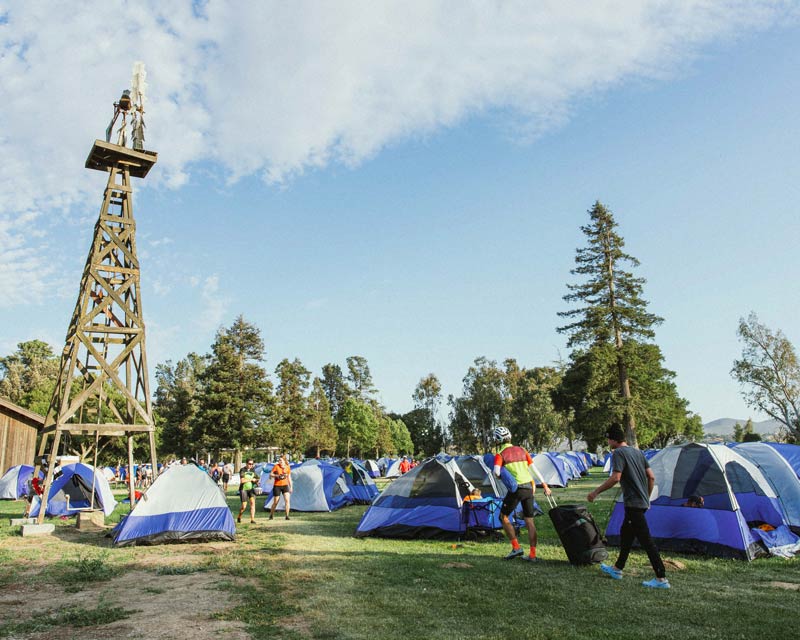
A grid of two-person tents in San Lorenzo County Park. (Courtesy of AIDS/LifeCycle)
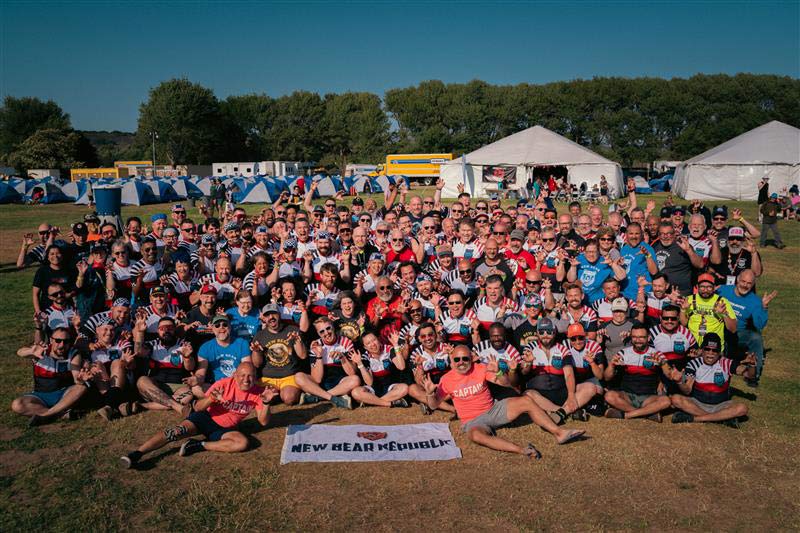
Broyles-Shaw's team, New Bear Republic. (Courtesy of AIDS/LifeCycle)
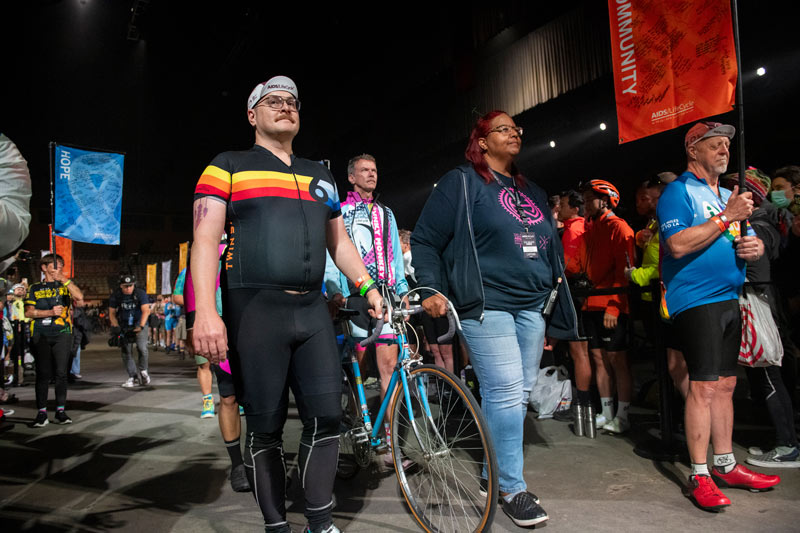
Riders and roadies escort the “riderless bike” through the Cow Palace during the AIDS/LifeCycle opening ceremony. (Courtesy of AIDS/LifeCycle)
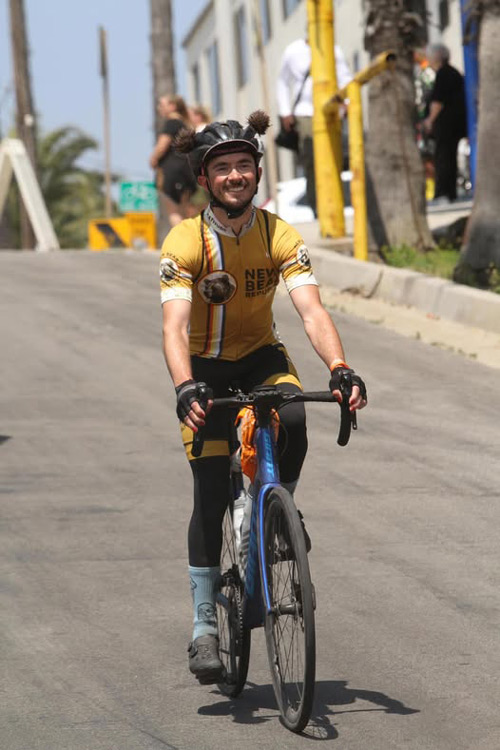
Mike Broyles-Shaw during an AIDS/LifeCycle ride. (Courtesy of AIDS/LifeCycle)
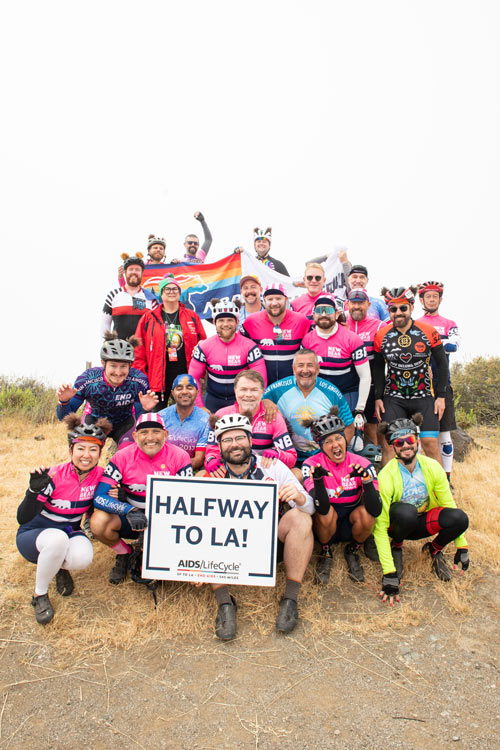
Part of the New Bear Republic team. (Courtesy of AIDS/LifeCycle)

An AIDS/LifeCycle supporter holds up a “Team Love Bubble” sign. (Courtesy of AIDS/LifeCycle)

AIDS/LifeCycle participants surround the “riderless bike” to honor those who have died from AIDS during the candlelight vigil on Day 6 in Ventura, California. (Courtesy of AIDS/LifeCycle)
Node 4
Our monthly newsletter includes news from UIT and other campus/ University of Utah Health IT organizations, features about UIT employees, IT governance news, and various announcements and updates.
Categories
Featured Posts
- IT Leadership Spotlight: Matt Irsik, head, User Support & Computing Services, Marriott Library
- Employee Feature: At AIDS/LifeCycle, Mike Broyles-Shaw bikes for accessible health care and a cure
- ITSM Process Manager Craig Bennion retires after 44 years
- Sr. Middleware Systems Administrator Jon Ross retires after 37 years


